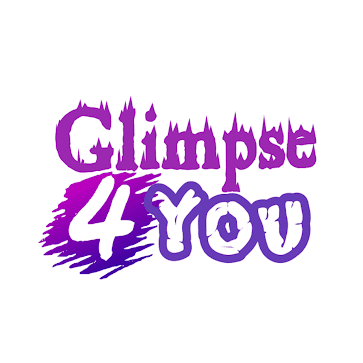What are the Hakka, Its history, and types
Thousands in New Zealand have expressed their condemnation of the victims of the terrorist attack on two mosques in Christchurch.
Temporary sites were dedicated to honouring the victims outside mosques, and large numbers joined the vigils, where prayers were recited and roses were scattered.
But in some places, New Zealanders have even performed a passionate performance of the Hakka dance in honour of Muslim victims. So what is this dance, and what does it mean?
At first glance, this dance seems strange, or inappropriate for the idea of honouring the victims, but it is actually an important dance for the Maori people, so what is its story?
Hakka dance
The Haka is a traditional New Zealand fighting cry, dance, or challenge. This posture dance is performed collectively, with violent, ground-stomping movements accompanied by rhythmic shouts and cries.
As for the history of the Hakka, it goes back to the fighters who performed the military Hakka before the battles, to show their strength and courage in order to strike terror into the hearts of opponents.
Many movements and positions are used in the performance of the Hakka, including altering facial features and violent movements such as hitting the body with the hands and hitting the ground with feet, in addition to the chanting that is interspersed with terrifying and frightening shouts and sounds.
The Hakka sounds like a symphony, with hands, arms, legs, feet, voice, eyes, tongue, and body all contributing to communicating courage, irritation, delight, and other emotions, the occasion being celebrated.
And there are those who consider the dance It is an ancient Maori war dance performed at weddings and funerals and challenges competitors in sports, most notably New Zealand's All Blacks rugby team.
It is a ceremonial or defiant dance in Maori culture. The dance is performed in a group, with the use of strong movements and the beating of the feet with a loud rhythm.
Although generally associated with traditional preparations for male warriors, the haka is performed by both men and women.
This dance has different styles performed according to the social function within the Maori culture. Hakkas are conducted to welcome distinguished guests, to recognize achievements, or at ceremonial events or funerals.
Hakka in schools and sports
Kapa haka groups (the name given to groups that perform the dance) are very popular in schools. The main Maori performing arts competition, Te Matatini, is held every two years. This may explain the appearance of a group of school students performing the dance in honour of the victims of the mosque attack
The practice of haka by New Zealand sports teams before their international matches has made the game widely known around the world.
This tradition began with the original New Zealand football team's 1888-1889 tour and has been carried out by the New Zealand rugby union ("All Blacks") team since 1905. Some Maori consider this use a form of cultural appropriation.
The history of the Hakka dance
Hakkas have been mistakenly defined by generations of uninitiated as "war dances". Whereas, Maori mythology places the "Hakka" like a dance "about celebrating life".
According to her origin story, the sun god, Tama-Nui-ti-a, had two wives, the summer maid Hin-aromatic and the winter maid Hin Takura.
Hakka Hind was brought up by the son of Hin-Raumati of the sun god, Tan Ruri, the air on hot days appearing shivering as if it were dancing.
On hot summer days, the "atmospheric shimmering" distortion of the air from the ground, is personified as a "Hakka".
The martial haka was originally performed by warriors before a battle, to demonstrate their strength and prowess in order to intimidate enemies.
Several actions were used during this performance, including facial distortions such as showing the whites of the eyes, sticking out the tongue, and a wide range of forceful body movements such as slapping the body and stomping hard on the feet.
In addition to the words, they chant loudly, a variety of shouts are used. Hakka can be understood as a type of symphony in which different parts of the body represent many instruments. The hands, arms, legs, feet, voice, eyes, tongue, and body as a whole unite to express courage, annoyance, joy, or other feelings related to the purpose of the occasion.
Types of Hakka dance
There are many types of Hakka, such as 'Vacatu Wawai', 'Totu Nagaraho', and 'Piruberu'. The ancient proper was performed before battles, to invoke the help of the god of war and to intimidate the opponent, in which the dancers jumped up with the knees bent forcefully, frowning and drawing terrifying expressions on the faces, with glaring and bulging eyes, shouting and brandishing weapons.
The haka was performed in a harmonious ensemble, and a cacophony was a bad omen before the battle, which warriors often fought semi-naked. The Hakka "Toto Ngaraho" also includes jumping, while the Hakka "Vakato Waiwai" does not include any jumping.
There is another haka that is performed without weapons, called nigiri, and its purpose is to motivate warriors. In this haka, the dancer has the freedom to express his body movements as he pleases. The haka "Manawa Wera" is typically performed during funerals and other funeral-related events.
It is also performed without weapons, with little to no dancing. The most famous Hakka in modern times is the Haka "Ka Mate", attributed to "Te Rauparaha", a warlord of the Ngati Tua tribe. The "ka mate" Hakka is classified as a ritual Hakka.
The theme of "ka mate" is the cunning tricks used by Te Rauparaha to defeat his enemies, and maybe understood as "the celebration of the victory of life over death".
In the modern era, various types of haka have been formed to be performed by women and even children.



Comments
Post a Comment